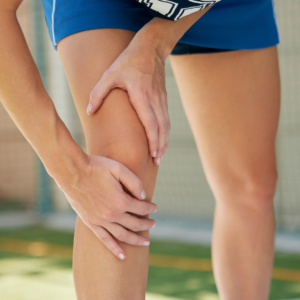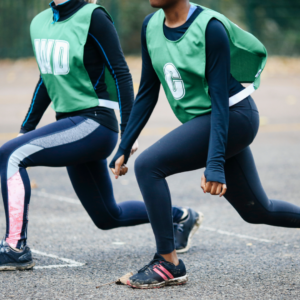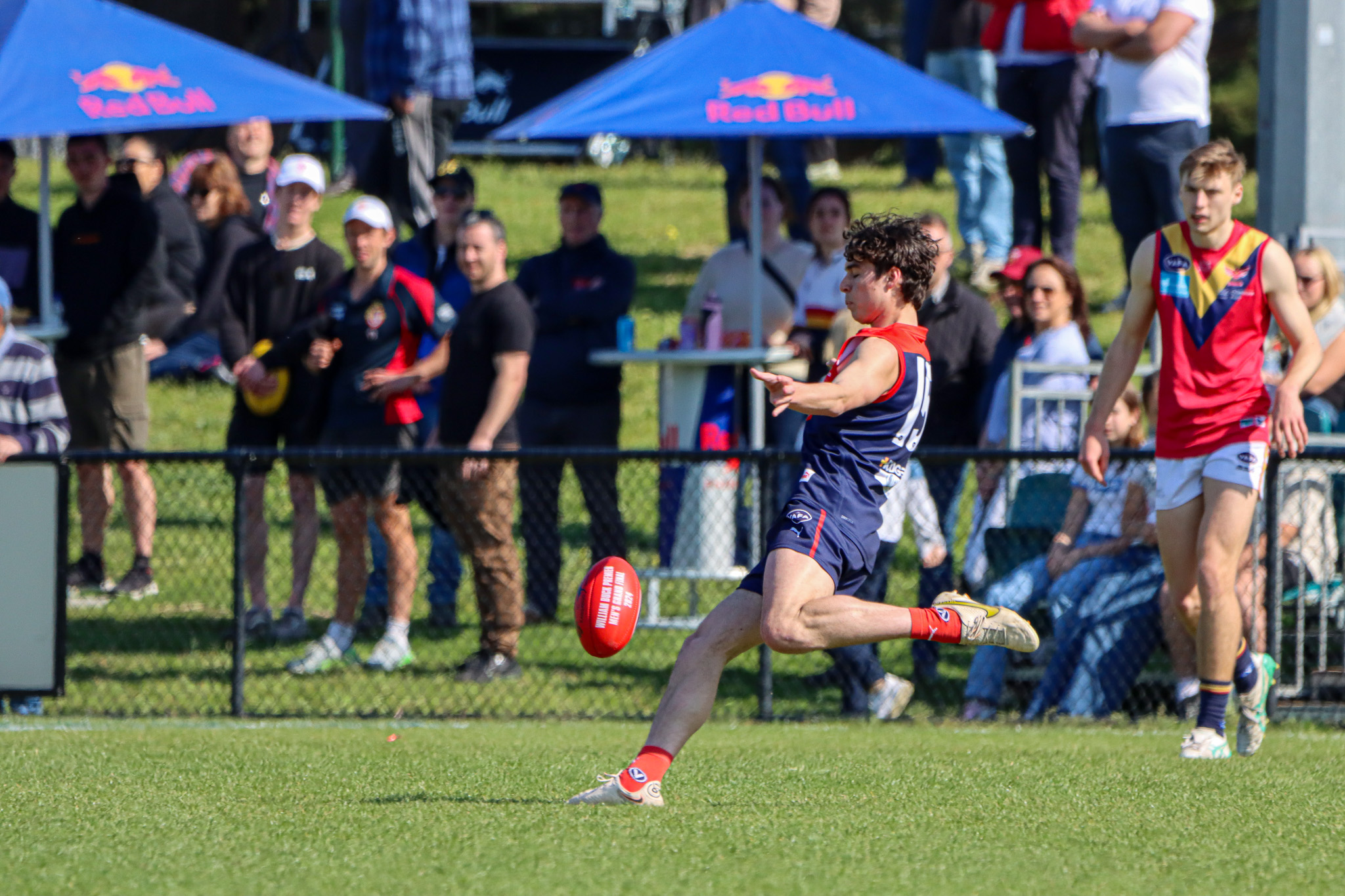With netball season in full swing, Saturdays are filled with goals, intercepts—and unfortunately, the occasional rolled ankle or sore knee. What are the most common injuries in netball, and how can we prevent them?
Lateral Ankle Sprains
Ankle sprains are one of the most common injuries in netball due to the sport’s dynamic movements, including cutting, pivoting, jumping, and landing in a confined court space. The one-step rule further increases the risk. For this reason, netball has one of the highest incidence rates of ankle sprains among all sports, accounting for approximately 40% of netball-related injuries. In fact, reports indicate that 4 in 5 netballers have sustained a lateral ankle sprain at some point in their playing careers.
Lateral ankle sprains occur when the ankle rolls inward, causing damage to the ligaments on the outer side of the ankle. These injuries may result from poor landing mechanics or contact with another player.

ACL Injuries
Knee injuries, particularly anterior cruciate ligament (ACL) ruptures, are the second most frequently reported injuries in netball. ACL injuries often occur when the knee collapses inward and rotates internally, typically during landing or cutting movements. Because of this, several modifiable risk factors contribute to ACL injuries, including joint stiffness, muscle weakness, poor balance, and improper landing mechanics.

Prevention Strategies
Given the increasing incidence of netball-related knee and ankle injuries, injury prevention programs have gained significant attention. Exercise-based warm-up programs have been proven to reduce injury risk, with studies showing a 50% reduction in ACL injuries among female athletes. In light of this, several sports have adopted these programs, and Netball Australia has developed a targeted initiative aimed at preventing knee and ankle injuries.
The KNEE Program
The Netball KNEE Program is designed to improve movement patterns related to jumping, landing, change of direction, and deceleration. It includes three levels suitable for junior, recreational, and elite netballers. Each program consists of four key components:
- Warm-up & Footwork
- Balance & Landing
- Strength
- Agility
Specifically, athletes should complete all warm-up exercises and then select four exercises from the remaining categories, tailored to their skill level. The focus should be on performing each movement correctly and with control.
Key Injury Prevention Tips
In order to minimise the risk of lateral ankle and ACL injuries, players should:
- Avoid excessive inward knee movement (knee valgus) during landing and cutting movements.
- Strengthen the glutes through exercises like bridges and side-step squats.
- Improve knee stability with movements such as reverse lunges with drive and squats.
- Focus on proper knee alignment during all jumping and landing drills.

If you’d like to read more about our Physiotherapy services click here.
Need Help? If you, your child, or a teammate experiences a knee or ankle injury—whether from netball or another sport—consult one of our expert physiotherapists. Contact us at 9131 4977 or book an appointment online.
References
Attenborough, A. S., Sinclair, P. J., Sharp, T., Greene, A., Stuelcken, M., Smith, R. M., & Hiller, C. E. (2016). A snapshot of chronic ankle instability in a cohort of netball players. Journal of science and medicine in sport, 19(5), 379–383. https://doi.org/10.1016/j.jsams.2015.04.010
Caldemeyer, L. E., Brown, S. M., & Mulcahey, M. K. (2020). Neuromuscular training for the prevention of ankle sprains in female athletes: a systematic review. The Physician and sportsmedicine, 48(4), 363-369.
Clark N. C. (2021). Noncontact Knee Ligament Injury Prevention Screening in Netball: A Clinical Commentary with Clinical Practice Suggestions for Community-Level Players. International journal of sports physical therapy, 16(3), 911–929. https://doi.org/10.26603/001c.23553
Emery CA, Meeuwisse WHThe effectiveness of a neuromuscular prevention strategy to reduce injuries in youth soccer: a cluster-randomised controlled trial. British Journal of Sports Medicine 2010;44:555-562.
Grayson J, Hillard D, Antcliff A, Chan C, Nightingale E, Pappas E. The effect of the KNEE program for Netball players on the modified Star Excursion Balance Test – a randomized controlled trial. Phys Ther Sport. 2024 May;67:83-89.
Horne, S., Shaheen, A.F., Baltzopoulos, B. et al. The netball injury evidence base: a scoping review of methodologies and recommendations for future approaches. Syst Rev 13, 203 (2024).
Mullally, E. M., Atack, A. C., Glaister, M., & Clark, N. C. (2021). Situations and mechanisms of non-contact knee injury in adult netball: A systematic review. Physical Therapy in Sport, 47, 193–200. https://doi.org/10.1016/j.ptsp.2020.12.004
Rowe, P.L., Bryant, A.L. & Paterson, K.L. Current ankle sprain prevention and management strategies of netball athletes: a scoping review of the literature and comparison with best-practice recommendations. BMC Sports Sci Med Rehabil 13, 113 (2021). https://doi.org/10.1186/s13102-021-00342-9
Saad T, Davies L, Smith M. Implementation of an injury prevention programme in community netball: An observational study. J Sports Sci. 2021 Oct;39(19):2180-2188.
Vuurberg, G., Hoorntje, A., Wink, L. M., Van Der Doelen, B. F., Van Den Bekerom, M. P., Dekker, R., . . . Ridderikhof, M. L. (2018). Diagnosis, treatment and prevention of ankle sprains: update of an evidence-based clinical guideline. British journal of sports medicine, 52(15), 956-956.
